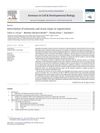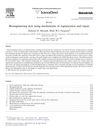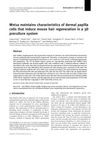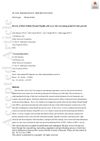Effects of Strain and Age on Ear Wound Healing and Regeneration in Mice
November 2009
in “
Brazilian Journal of Medical and Biological Research
”
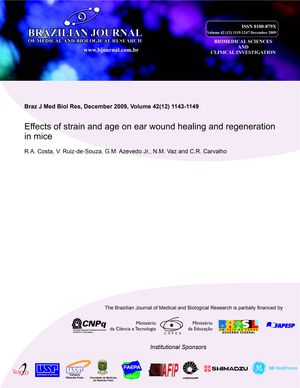
TLDR Young C57BL/6 mice heal better than BALB/c mice, and older mice heal faster but regenerate worse.
The study explored how strain and age affect ear wound healing and regeneration in mice, comparing young (8 weeks old) C57BL/6 and BALB/c mice to middle-aged (40 weeks old) C57BL/6 mice. Results showed that by day 100, young C57BL/6 mice had a higher percentage of wound closure (56.47 ± 7.39%) compared to young BALB/c mice (23.57 ± 8.66%), and middle-aged C57BL/6 mice had the highest closure rate (75.31 ± 23.65%). However, the greater wound closure in middle-aged mice did not correspond to better regeneration, as they exhibited reduced regenerative processes and no new hair follicles or sebaceous glands. Young C57BL/6 mice demonstrated better tissue reorganization and regeneration, including more organized collagen fibers and extensive cartilage formation. The study concluded that young mice of both strains showed signs of regeneration, with young C57BL/6 mice having superior regenerative characteristics compared to BALB/c mice, and that aging impairs the regenerative capacity in mice.
